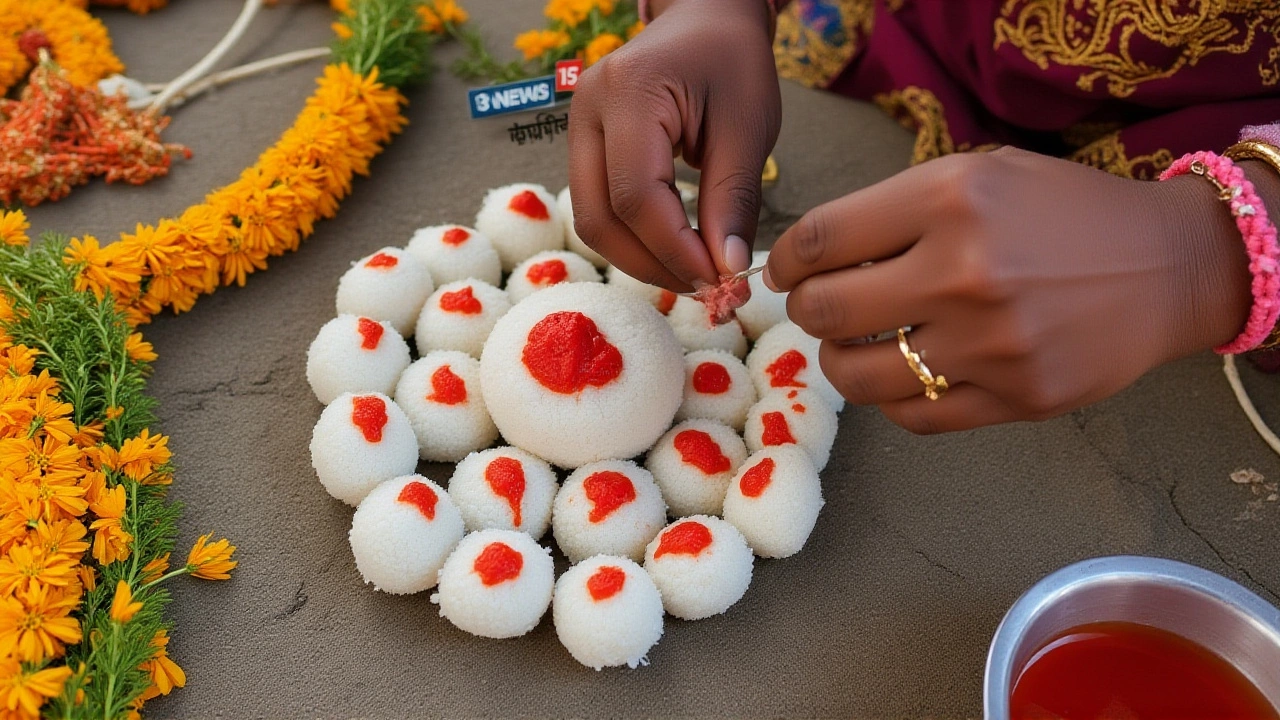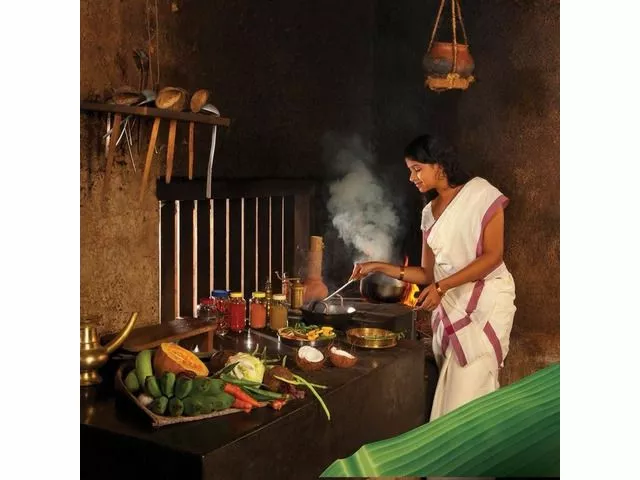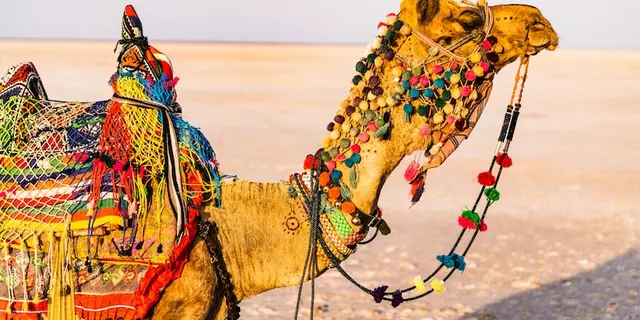 20
Nov,2025
20
Nov,2025
On Sunday, April 27, 2025, millions of Hindus across India will rise before dawn to perform Vaishakha Amavasya rituals—offering water and sesame seeds to ancestors, bathing in holy rivers, and fasting in silence. This isn’t just another lunar day. It’s one of the most spiritually charged moments in the Hindu calendar, when the veil between the living and the departed is believed to be thinnest. While sources like India Today, India Today, Gupta Vrindavan Dham, and AstroSage disagree on the exact start and end of the Amavasya Tithi, they all converge on one truth: April 27 is the day to observe it. The Udaya Tithi, which begins at sunrise, overrides conflicting timings, making this the definitive day for rituals meant to free families from ancestral burdens.
Why April 27? The Timing Debate Explained
Here’s the twist: India Today says Amavasya begins at 11:15 a.m. on April 26, while Gupta Vrindavan Dham claims it starts at 4:49 a.m. on April 27. Narayan Seva Foundation places it at 7:20 p.m. on April 26, and AstroSage says 4:52 a.m. on the 27th. So which is right? In practice, it doesn’t matter much. Hindu tradition prioritizes the Udaya Tithi—the lunar phase present at sunrise. Since Amavasya is visible at sunrise on April 27 across nearly all regions, that’s the day families will gather, light lamps, and chant mantras. The real focus isn’t on minutes—it’s on intention.
The Rituals: Water, Seeds, and Silence
At dawn, devotees travel to the Ganges, Yamuna, or local temple tanks to bathe. The water isn’t just for cleansing the body—it’s meant to wash away karmic residue. After the bath, families sit by the riverbank or in their courtyards, placing rice balls called pindas and drops of water mixed with sesame seeds into a copper vessel. As they chant the Pitru Gayatri mantra, they visualize their ancestors receiving the offering. Rudraksha Ratna notes this act, known as Pitru Tarpan, is believed to nourish the souls of those who passed without proper rites. Fasting is common—many skip meals entirely, while others consume only fruits and milk. Charity, or daan, is non-negotiable: feeding the poor, donating clothes, or giving cows to temples are seen as direct ways to ease ancestral suffering.
Why Vaishakha? The Mythological Weight
What makes this month so potent? According to AstroSage, Vaishakha marks the beginning of Treta Yuga, the second of Hinduism’s four cosmic ages, when Lord Rama walked the earth. Festivals in this month carry extra weight because they’re tied to that divine epoch. Gupta Vrindavan Dham adds that Vaishakha Amavasya is dedicated to Lord Vishnu—the preserver—linking ancestor worship to cosmic balance. When you honor your forebears, you’re not just remembering them; you’re aligning your family’s energy with the divine order. And then there’s the Preeti Yoga, a rare planetary alignment that AstroSage says forms from 4:34 a.m. to 12:18 p.m. on April 28. Though technically after the main day, many still perform rituals during this window, believing it multiplies the merit. Some regions even observe Shani Jayanti on this day, adding another layer of spiritual urgency.
What Happens If You Don’t Observe It?
It’s not about fear—it’s about consequence. Hindu belief holds that unfulfilled ancestral duties create Pitra Dosha, a spiritual imbalance that manifests as recurring financial loss, health issues, or relationship struggles. India Today reports that families who skip these rituals often report feeling a persistent heaviness, even if they can’t explain why. One priest in Varanasi told me, “It’s like leaving a door unlocked in a house you don’t live in anymore. The wind still comes through.” The rituals aren’t superstition; they’re emotional archaeology. They force you to confront who came before you—and what you owe them.

What’s Next? The Ripple Effect
As urbanization grows, fewer young Hindus perform these rites. But there’s a quiet revival. In Bengaluru, tech workers are scheduling video calls with elders in villages to learn the mantras. In Delhi, apps now send reminders for Amavasya with local riverbank timings. The tradition is adapting, not dying. And with the rise of digital Pind Daan services—where donations are made in an ancestor’s name through temple portals—the ritual is becoming accessible to the diaspora. This year, Narayan Seva Foundation expects a 40% increase in online charity registrations tied to Vaishakha Amavasya.
Why This Matters Beyond Religion
At its core, Vaishakha Amavasya is about memory. In a world that rushes forward, this day asks: Who are you because of those who came before? It’s not just about appeasing spirits—it’s about honoring lineage, confronting grief, and choosing compassion. The water you pour isn’t just for the dead. It’s a mirror for the living.
Frequently Asked Questions
Can I perform Pitru Tarpan if I don’t know my ancestors’ names?
Yes. Hindu tradition allows for generic offerings addressed to "all departed ancestors." The mantras used during Tarpan are designed to reach souls regardless of name or lineage. Many priests recommend including a silent intention—such as "for the peace of all my forebears"—to personalize the ritual even without specific details.
Is fasting mandatory on Vaishakha Amavasya?
No, but it’s strongly encouraged. Fasting purifies the body and mind, making the ritual more effective. Those unable to fast completely may opt for a single meal of fruits, milk, or root vegetables. The key is mindfulness—not deprivation. Even a partial fast with devotion carries spiritual weight, according to Gupta Vrindavan Dham.
What if I live outside India and can’t reach a holy river?
You can perform Tarpan at home using a copper or brass vessel filled with water and a few drops of Ganga Jal (if available). If not, tap water sanctified with a simple prayer works. Many temples in the U.S., U.K., and UAE offer virtual participation kits with ritual guides. The intention matters more than geography—AstroSage confirms this.
Why is sesame seed used in Tarpan?
Sesame seeds are believed to have purifying properties and are associated with immortality in Vedic texts. Their dark color symbolizes the unseen realm of ancestors, and their oil content represents nourishment for souls in transition. The ritual uses 10–12 seeds, each representing a generation. This practice dates back over 3,000 years and remains unchanged in both rural villages and modern homes.
Does Vaishakha Amavasya help with Shani Dosh or other planetary afflictions?
Yes, according to AstroSage, performing Tarpan and charity on this day is one of the most effective remedies for Shani Dosh, Grah Dosh, and Kalsarp Dosh. The reasoning? Ancestral unrest often amplifies planetary challenges. By resolving karmic debts from the past, you remove the underlying tension that fuels current suffering. Many priests recommend combining Tarpan with lighting a mustard oil lamp for Saturn on this day.
Can women perform these rituals?
Absolutely. While some regional traditions once restricted women, modern Hindu practice, backed by scholars from Narayan Seva Foundation, affirms that women are not only permitted but are often the primary keepers of ancestral rites. In many households, daughters and daughters-in-law lead the Tarpan. The belief is that the feminine energy is especially attuned to nurturing souls in transition.




